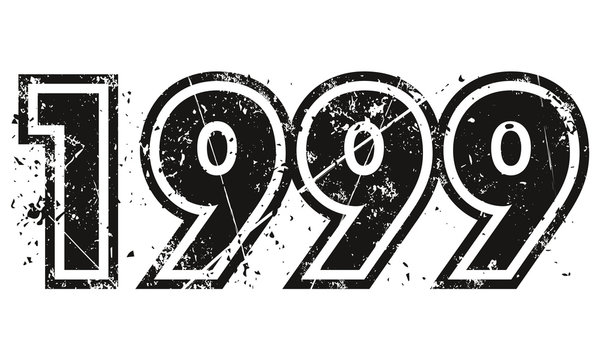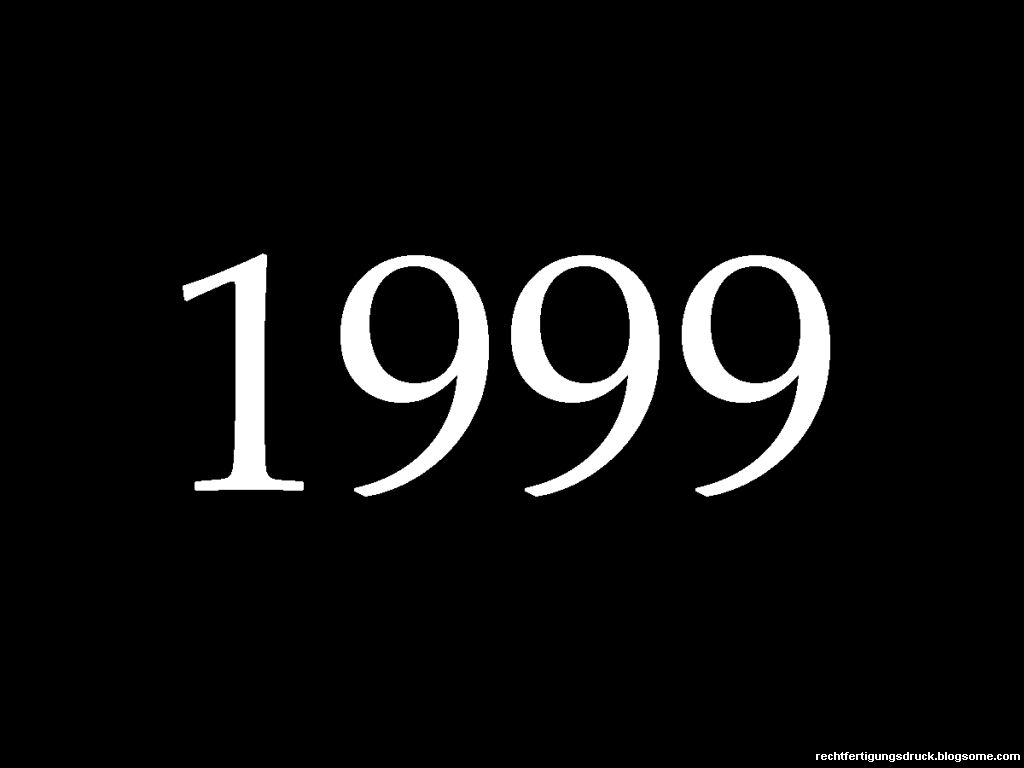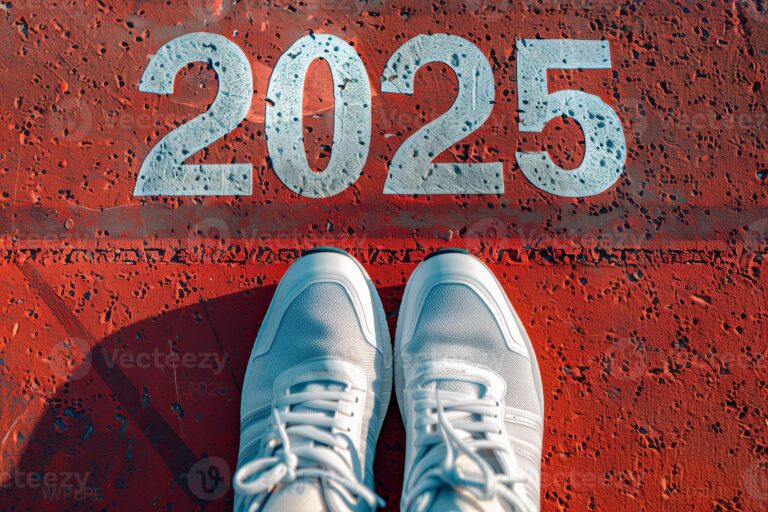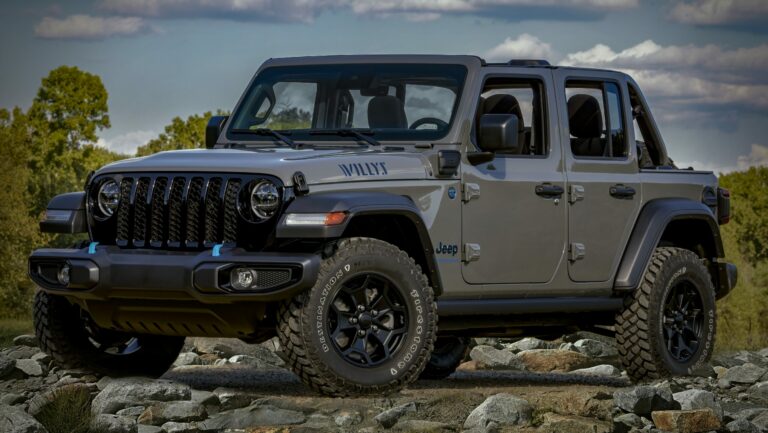1999 Jeep Grand Cherokee Parts For Sale: Keeping the WJ Legend Alive
1999 Jeep Grand Cherokee Parts For Sale: Keeping the WJ Legend Alive jeeps.truckstrend.com
The year 1999 marked the dawn of a new era for Jeep’s flagship SUV, introducing the completely redesigned WJ generation of the Grand Cherokee. Building on the success of its ZJ predecessor, the 1999 Grand Cherokee brought a smoother ride, more refined interior, and improved on-road manners without sacrificing its legendary off-road capability. Twenty-five years later, this model remains a beloved workhorse, a capable off-roader, and a surprisingly comfortable daily driver for many.
The enduring popularity of the 1999 Jeep Grand Cherokee (WJ) means that maintaining, repairing, and even upgrading these vehicles is a common endeavor for owners. Whether you’re a seasoned mechanic, a DIY enthusiast, or simply someone looking to extend the life of your trusty WJ, the availability of "1999 Jeep Grand Cherokee Parts For Sale" is crucial. This comprehensive guide will delve into everything you need to know about sourcing, selecting, and understanding the vast market of components available for this iconic SUV, ensuring your Grand Cherokee continues to conquer roads and trails for years to come.
1999 Jeep Grand Cherokee Parts For Sale: Keeping the WJ Legend Alive
Why the 1999 Jeep Grand Cherokee Remains a Parts Hotspot
The persistent demand for 1999 Jeep Grand Cherokee parts isn’t just nostalgia; it’s rooted in several practical realities:
- Durability and Longevity: The WJ Grand Cherokee was built with robust components. Its unibody construction, coupled with sturdy drivetrain options like the venerable 4.0L inline-six and the potent 4.7L V8, means many units are still on the road, often with high mileage. Parts wear out, but the core vehicle often remains sound.
- Affordability as a Used Vehicle: The 1999 WJ is an incredibly affordable used SUV. For many owners, investing in repairs and maintenance is far more economical than purchasing a newer vehicle, especially given its capabilities.
- Strong Aftermarket and Community Support: The Grand Cherokee, particularly the WJ, boasts a massive and passionate owner community. This has fostered a thriving aftermarket industry, producing everything from routine replacement parts to specialized off-road upgrades. Forums, social media groups, and dedicated websites provide invaluable resources for diagnosis, repair guides, and peer-to-peer parts sales.
- Common Wear and Tear Issues: Like any vehicle of its age, the 1999 WJ has common failure points. These include HVAC blend door actuators, various suspension bushings, rust on body panels, and occasional electrical gremlins. The consistent need for these specific parts ensures a steady supply in the market.

Types of 1999 Jeep Grand Cherokee Parts Available
When searching for parts, you’ll encounter several categories, each with its own advantages and disadvantages:
-
OEM (Original Equipment Manufacturer) Parts: These are parts made by the original manufacturer (Jeep/Chrysler) or by a company contracted by them.
- Pros: Guaranteed fit and function, often higher quality control, exact match to original components.
- Cons: Most expensive option, sometimes harder to find for older models, limited availability for discontinued items.
- Best For: Critical components like engine sensors, complex electrical modules, or situations where precise fit and performance are paramount.

-
Aftermarket Parts: Produced by companies other than the original manufacturer. These can range from direct replacements to performance upgrades.
- Pros: Generally more affordable than OEM, wider variety of options (including performance-oriented parts), readily available.
- Cons: Quality can vary significantly between brands, fitment issues can occasionally arise, no guarantee of identical performance to OEM.
- Best For: Common wear items (brakes, filters, suspension components), performance upgrades (lift kits, exhaust), or budget-conscious repairs. Reputable brands are key here.
-
Used/Salvage Parts: Components salvaged from other vehicles, typically from junkyards or parts cars.
- Pros: Most cost-effective, ideal for rare or discontinued body panels, interior trim, or large assemblies like engines/transmissions. Can provide authentic, period-correct parts for restoration.
- Cons: No warranty (usually), condition can be highly variable (inspect thoroughly!), unknown history, labor-intensive to acquire and clean.
- Best For: Body panels, interior pieces, specific electrical modules (if tested), large mechanical assemblies where a new replacement is cost-prohibitive.
-
Remanufactured Parts: Original parts that have been rebuilt to factory specifications, often with common failure points addressed and worn components replaced.
- Pros: Cost-effective alternative to new OEM, environmentally friendly, often come with a warranty, good quality control.
- Cons: Requires a "core" return (your old part), can sometimes have minor cosmetic imperfections.
- Best For: Alternators, starters, brake calipers, power steering pumps, engine long blocks, and transmissions.

Categorization by Vehicle System:
- Engine & Drivetrain: Spark plugs, filters, belts, water pumps, alternators, starters, fuel pumps, engine mounts, transmissions, transfer cases, differentials.
- Suspension & Steering: Control arms, ball joints, tie rod ends, shocks, springs, sway bar links, steering boxes, power steering pumps.
- Brakes: Rotors, pads, calipers, brake lines, master cylinders.
- Electrical & HVAC: Sensors (O2, ABS, crank/cam), modules, switches, blend door actuators, blower motors, wiring harnesses, lighting assemblies.
- Body & Interior: Fenders, doors, hoods, liftgates, mirrors, window regulators, door handles, seats, dashboards, trim pieces.
- Performance & Off-Road Upgrades: Lift kits, heavy-duty suspension components, skid plates, aftermarket bumpers, winches, oversized tires, performance exhausts.
Where to Find 1999 Jeep Grand Cherokee Parts For Sale
The digital age has made finding parts easier than ever, but local options still hold value:
-
Online Retailers:
- RockAuto.com: Known for extensive catalogs, competitive pricing, and a wide selection of aftermarket and remanufactured parts. Great for comparing brands.
- PartsGeek.com, CarParts.com: Similar to RockAuto, offering a broad range of replacement parts.
- Amazon & eBay: Excellent for both new aftermarket parts and used components. Be diligent about checking seller ratings and return policies.
- Quadratec.com, Morris4x4Center.com: Specialty Jeep retailers offering a mix of OEM, aftermarket, and performance parts, often with knowledgeable staff.
- Dealer Websites: Many Jeep dealerships sell genuine Mopar (OEM) parts online.
-
Local Auto Parts Stores: (AutoZone, Advance Auto Parts, O’Reilly Auto Parts, NAPA)
- Pros: Immediate availability for common items, ability to inspect parts, easy returns, often provide tool rentals.
- Cons: Higher prices than online, limited selection for specialized or older parts.
- Best For: Fluids, filters, spark plugs, basic brake components, batteries, and diagnostic tool rentals.
-
Salvage Yards / Junkyards: (e.g., LKQ Pick Your Part)
- Pros: Unbeatable prices, unique finds (rare interior bits, specific color body panels), environmentally friendly.
- Cons: Labor-intensive (you often pull the part yourself), no warranty, condition varies greatly, dirty environment.
- Tips: Call ahead to check inventory, bring your own tools, inspect parts thoroughly before purchase.
-
Online Marketplaces & Forums:
- Facebook Marketplace, Craigslist: Great for local pickup of used parts from individuals, often at good prices.
- Jeep Forums (e.g., JeepForum.com, GrandCherokeeForum.com): Dedicated "parts for sale" sections where enthusiasts buy, sell, and trade. Excellent for specialized or rare parts and tapping into community knowledge.
-
Dealerships:
- Pros: Guaranteed genuine OEM parts, knowledgeable staff (for Mopar parts).
- Cons: Most expensive option, may need to order parts, limited stock for older models.
- Best For: Parts that absolutely require OEM precision or have no reliable aftermarket equivalent.
Important Considerations When Buying Parts
Making an informed purchase will save you time, money, and frustration:
- Compatibility is Key: Always verify the part’s compatibility with your specific 1999 Grand Cherokee. Provide your VIN (Vehicle Identification Number) to online retailers or check part numbers carefully. Confirm engine size (4.0L I6 or 4.7L V8), 2WD/4WD, and trim level (Laredo, Limited, Overland).
- Condition for Used Parts: If buying used, ask for multiple clear photos from different angles. Inquire about the vehicle the part came from (mileage, accident history). Test components if possible (e.g., window motors, electrical switches).
- Warranty: New parts (OEM and aftermarket) usually come with a warranty (e.g., 1-year, limited lifetime). Used parts rarely do. Understand the warranty terms before purchasing.
- Shipping Costs: For large or heavy items (e.g., transmissions, fenders), shipping costs can be significant. Factor this into your total price. Some sellers offer local pickup.
- Return Policy: Especially for online purchases, understand the seller’s return policy. What are the conditions for returns? Who pays for return shipping? A good return policy is invaluable if a part doesn’t fit or is defective.
- Brand Reputation: For aftermarket parts, research the brand. Read reviews. Brands like Moog (suspension), Bosch (sensors), Denso (electrical), and Wagner (brakes) generally have good reputations.
- OEM vs. Aftermarket vs. Used:
- Critical Components (e.g., engine internals, ABS module): Lean towards OEM or high-quality aftermarket.
- Wear Items (e.g., brakes, filters): Aftermarket is often perfectly fine and more economical.
- Cosmetic/Non-Critical (e.g., interior trim, door handles): Used parts are excellent for saving money.
Tips for Successful Part Acquisition and Installation
- Accurate Diagnosis First: Don’t just throw parts at a problem. Diagnose the issue thoroughly using service manuals, online forums, and diagnostic tools. A misdiagnosis leads to wasted money and time.
- Research Part Numbers: Cross-reference part numbers from your vehicle’s existing component, service manuals, or online parts diagrams.
- Watch Installation Guides: YouTube is a treasure trove of DIY repair videos for the WJ. Watch several to get a good understanding of the process, required tools, and potential pitfalls.
- Gather the Right Tools: Ensure you have the necessary hand tools, specialty tools (e.g., ball joint press, torque wrench), and safety equipment (jack stands, gloves, eye protection) before you start.
- Prioritize Safety: Always work on a level surface, use jack stands, disconnect the battery when working on electrical systems, and wear appropriate safety gear.
- Consider Professional Help: For complex repairs (e.g., transmission rebuilds, major engine work, AC system repair), or if you lack the confidence/tools, don’t hesitate to consult a qualified mechanic specializing in Jeeps.
- Preventative Maintenance & Bundling: When replacing a worn part, consider replacing related components that are also subject to wear (e.g., replacing control arm bushings when doing ball joints, or replacing all four shocks instead of just one). This saves on labor later.
Challenges and Solutions
- Obscure or Discontinued Parts: For very rare or no-longer-produced parts, your best bet is often salvage yards, dedicated Jeep forums, or specialized classic Jeep parts suppliers who might have old stock or connections.
- Counterfeit Parts: Be wary of suspiciously low prices on critical components, especially from unknown online sellers. Stick to reputable retailers and brands. Counterfeit parts can be dangerous and unreliable.
- High Shipping Costs: For large or heavy items, explore local pickup options if available. Consider consolidating multiple purchases from one vendor to optimize shipping fees.
- Installation Difficulty: If a repair seems beyond your skill level, don’t force it. A damaged component or an incorrectly installed part can lead to more expensive problems. Get a quote from a trusted mechanic.
1999 Jeep Grand Cherokee Parts – Estimated Price Guide
Please note: Prices are highly variable and depend on the brand (OEM, reputable aftermarket, budget aftermarket), condition (new, remanufactured, used), seller, and current market demand. This table provides estimated ranges for common parts.
| Part Category | Specific Part Example | Estimated Price Range (USD) | Notes |
|---|---|---|---|
| Engine & Drivetrain | Spark Plugs (set of 6) | $30 – $60 | Varies by material (copper, platinum, iridium) |
| Water Pump | $50 – $150 | Aftermarket to OEM quality | |
| Alternator | $100 – $300 | Remanufactured to new OEM. Core charge often applies. | |
| Starter Motor | $80 – $250 | Remanufactured to new OEM. Core charge often applies. | |
| Fuel Pump Assembly | $100 – $400 | Aftermarket to OEM. Located in fuel tank. | |
| Engine Mount (each) | $20 – $70 | Aftermarket rubber or polyurethane. | |
| Transmission Filter & Gasket | $20 – $50 | Essential for transmission fluid service. | |
| Transfer Case Fluid (per qt) | $10 – $25 | Specific fluid type (NV247 uses special fluid). | |
| Suspension & Steering | Front Upper Control Arm (each) | $40 – $120 | Includes ball joint; aftermarket options vary. |
| Front Lower Control Arm (each) | $60 – $150 | Includes ball joint; often replaced in pairs. | |
| Front Shock Absorber (each) | $30 – $100 | Standard replacement. Performance options higher. | |
| Steering Stabilizer | $40 – $100 | Reduces steering wander/shimmy. | |
| Ball Joint (each) | $20 – $60 | Upper/lower, often sold in kits. | |
| Tie Rod End (each) | $25 – $75 | Inner or outer. | |
| Brakes | Front Brake Rotor (each) | $30 – $80 | Standard replacement. Drilled/slotted options are higher. |
| Front Brake Pads (set) | $25 – $70 | Ceramic, semi-metallic options. | |
| Rear Brake Rotor (each) | $25 – $70 | ||
| Rear Brake Pads (set) | $20 – $60 | ||
| Brake Caliper (remanufactured) | $50 – $100 | Core charge applies. | |
| Electrical & HVAC | Blend Door Actuator (each) | $20 – $80 | Common failure point, multiple actuators in HVAC system. |
| O2 Sensor (each) | $40 – $100 | Upstream/Downstream, varies by engine. | |
| Headlight Assembly (each) | $80 – $250 | Aftermarket to OEM. Often replaced due to hazing. | |
| Tail Light Assembly (each) | $60 – $150 | Aftermarket to OEM. | |
| Body & Interior | Door Handle (exterior, each) | $15 – $40 | Aftermarket. Often break. |
| Window Regulator (each) | $50 – $150 | With or without motor; common failure. | |
| Side Mirror (each) | $40 – $120 | Manual or power; heated options higher. | |
| Liftgate Strut (pair) | $20 – $50 | Gas shocks to hold up rear hatch. | |
| Fluids & Filters | Oil Filter | $5 – $15 | Brand dependent; synthetic oil recommended for modern engines. |
| Air Filter | $10 – $30 | Standard paper filter or reusable performance filter. | |
| Cabin Air Filter | $15 – $40 | If equipped (some early WJs didn’t have them, or were an option). |
Disclaimer: All prices listed are approximate estimates and can vary significantly based on brand, retailer, whether the part is new, remanufactured, or used, and current market conditions. Always verify prices and ensure compatibility before making a purchase.
Frequently Asked Questions (FAQ) about 1999 Jeep Grand Cherokee Parts
Q: Are 1999 Grand Cherokee parts hard to find?
A: No, generally they are quite accessible. Due to the high production numbers and the model’s enduring popularity, there’s a robust market for new aftermarket, remanufactured, and used OEM parts.
Q: Should I buy OEM, aftermarket, or used parts?
A: It depends on the specific part, your budget, and how critical the component is.
- OEM: Best for critical engine/drivetrain components, complex electronics, or if you want guaranteed fit and quality regardless of cost.
- Aftermarket: Excellent for wear items (brakes, suspension) and performance upgrades, offering a balance of cost and quality. Choose reputable brands.
- Used: Ideal for cosmetic parts (interior trim, body panels), large assemblies (engines, transmissions), or discontinued items where cost is a major factor.
Q: How do I ensure a part is compatible with my 1999 Grand Cherokee?
A: Always provide your vehicle’s VIN (Vehicle Identification Number) to online retailers or cross-reference part numbers with your existing component. Confirm details like engine size (4.0L I6 or 4.7L V8), 2WD or 4WD, and trim level, as these can affect part specifics.
Q: What are common failure points on the 1999 Grand Cherokee that often require new parts?
A: Common issues include HVAC blend door actuators (leading to poor climate control), front suspension components (ball joints, control arm bushings), rust on rocker panels and rear quarter panels, and various electrical gremlins (e.g., window regulators, sensor failures).
Q: Can I install most 1999 Grand Cherokee parts myself, or do I need a mechanic?
A: Many common repairs are DIY-friendly with basic tools, a service manual, and online video guides. This includes oil changes, brake jobs, spark plug replacement, and some suspension work. More complex jobs like transmission overhauls, engine rebuilds, or intricate electrical diagnostics are best left to a professional.
Q: Where is the best place to find used 1999 Grand Cherokee parts?
A: Salvage yards (like LKQ Pick Your Part), online marketplaces (eBay, Facebook Marketplace, Craigslist), and dedicated Jeep owner forums are excellent sources for used parts.
Q: Do I need special tools for WJ repairs?
A: While many jobs can be done with a standard metric socket and wrench set, some repairs might require specialized tools like a ball joint press, tie rod end puller, or specific diagnostic scanners. These can often be rented from local auto parts stores.
Conclusion
The 1999 Jeep Grand Cherokee (WJ) holds a special place in the hearts of many, revered for its blend of rugged capability and surprising comfort. Its continued presence on roads and trails across the globe is a testament to its robust design and the dedication of its owners. Thankfully, the market for "1999 Jeep Grand Cherokee Parts For Sale" is vibrant and diverse, offering a wealth of options from brand new OEM components to budget-friendly used parts and performance-enhancing aftermarket upgrades.
By understanding the different types of parts available, knowing where to source them, and considering key factors like compatibility, condition, and warranty, you can confidently navigate the repair and maintenance landscape for your WJ. Whether you’re tackling a major overhaul or simply replacing a worn-out component, the availability of these parts ensures that the legacy of the 1999 Jeep Grand Cherokee will continue to thrive, allowing these iconic vehicles to embark on countless more adventures. Keep your WJ alive and well – the parts are out there waiting!
.jpg?t=166273357334)





